
Programme
A programme of support unique in France
The Institut’s grant aims to develop, share and compare diverse approaches to photography – the history of photography, image anthropology, visual studies, digital humanities, human and social sciences, science, plastic arts research, etc.
The call for applications is open to doctoral students, university or independent researchers, exhibition curators and artists who are available for the committed year. The projects – publication, exhibition, design of works – must address the announced theme, and the Institute will be particularly interested in projects that focus on an issue, a programme or resources connected with the Hauts-de-France Region.
The Institut pour la photographie awards four annual grants of 15,000 euros for the design and execution of a new project.
These include scientific and structural support, and are part of a promotion/dissemination programme (about four papers, presentations or workshops spread over the year) organised by the Institute, in collaboration with its partners, in the Hauts-de-France Region or beyond.
One theme a year
2023
Stories we tell, stories we show : photo-textual strategies in the renewal of narrative formats
Four laureates by edition
A jury of experts
Previous editions
2022
Images of resistance
2021
Photography and the politics of the earth
2020
Photographs and visual cultures of the imaginary.
2019
Photography, object of diffusion
2023 EDITION
Stories we tell, stories we show : photo-textual strategies in the renewal of narrative formats
For the fifth 2023 edition of the Institut’s Grant in the frame of its programme to support research and creation, the Institut pour la photographie des Hauts-de-France is opening a call for applications on narrative and photographic practices, or, more precisely, on the way in which text-image systems have managed to renew or continue to renew narrative formats today.
Although writing the narrative requires a poetic dimension, it is above all a means of depicting, relating, recounting, telling – terms that also refer to what is done in photography. However, beyond this initial analogy, the meeting point between photography and text often has something of a visual and narrative strategy: in the different narrative genres, autobiography, investigation, fiction, history, the specific qualities of the image and the written word complement each other, giving rise to new original formats arising from the encounter between photo and text.
We think of the Surrealists, with the famous Nadja, the photographic contribution of which upset literary conventions, as well as photo-text series favouring the narrative format, including the famous Suite vénitienne by Sophie Calle (1980), as well as certain series by Carie Mae Weems in which short accounts of the photographs restore the humanity that has been stolen, not to mention the very powerful present-day revival in all narrative formats that are developing alongside images.
The laureates
Sylvain
Couzinet-Jacques

Retcon Black Mountain
A speculative fiction project, Retcon Black Mountain revisits the existence of the well-known American school Black Mountain College (1933-1957), combining a documentary approach and archival research with contemporary re-enactment techniques.
The photographic archives and text documents serve as the matrix for research using “deep learning” tools, and will then be re-enacted by the inhabitants of the town of Black Mountain, North Carolina (USA).
Well-known among the artists and intellectuals of the time, and well beyond, Black Mountain College attracted and created non-conformist thinkers, some of whom went on to become famous and extremely influential in the second half of the 20th century. They included Willem and Elaine de Kooning, Robert Rauschenberg, Josef and Anni Albers (who ran the institution), Buckminster Fuller, Jacob Lawrence, Merce Cunningham, John Cage, Cy Twombly, Susan Weil, Vera B. Williams, Franz Kline, Alma Stone Williams, Philip Guston, and many others who had a major impact on art and its teaching in the 20th century.
By revisiting the photo and text archives, Retcon Black Mountain primarily aims to reflect upon the present day through group reenchantment efforts: would it be possible to reproduce the experience of the school in a modern-day space? What would be the contemporary challenges, the structure and the ideology of such a place? The research project will explore the reenchantment of reality, and how virtual reality can impact individual and collective identity.
—
Sylvain Couzinet-Jacques is a graduate of the École des Beaux-Arts de Marseille and of the École Nationale Supérieure de la Photographie d’Arles. His work has been presented in the form of personal exhibits at Le Bal in Paris in 2013, at the Aperture Foundation in New York in 2016, and at C/O Berlin in 2019. For many years, he has reflected on the notion of reenchantment, using an approach that combines the documentary genre and the visual arts. His first book, Eden (1,000 pages of handscans of a house purchased for $1,000 in Eden, North Carolina) was published by Aperture (New York) in 2016, and Sub Rosa was published by Spector Books in 2019.
Find the work of Sylvain Couzinet-Jacques on is website and this Instagram profile
Vanessa Desclaux and Agnès Geoffray
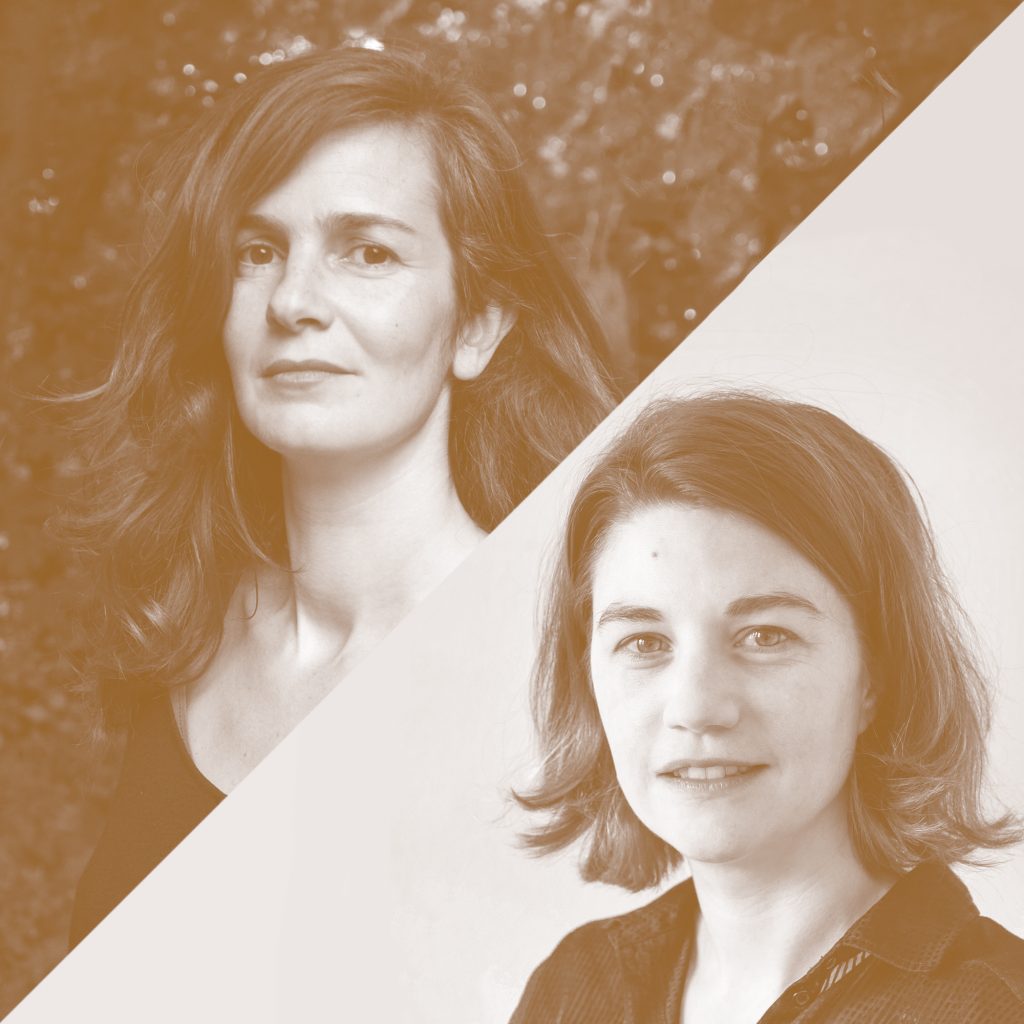
Written bodies
Vanessa Desclaux and Agnès Geoffray wish to cast a new light on visual and textual depictions of young women involved in the youth justice system, between the late 19th century and the present day. Basing their work on archives, particularly those of the Youth Legal Protection Department in Roubaix, they will explore the notions of delinquency, sexual morality, behaviours considered to be marginal and feminine bodies considered to be immoral. Wishing to draw attention to forms of rebellion and disobedience to authority, they will explore images and stories created by women affected by these “protection” policies, offering other ways to tell the stories of their bodies and of the institutions that assess and confine them.
Their aim is to use poetic and political means to make this long history resonate in our present time. Their process is guided by an ethical question: the necessity of attempting to express another’s reality, and of reading into absences and silences. Although history plays an important role for both researchers, they wished to immerse themselves in the archives in order to express their fabulatory potential, through their plastic, narrative and curatorial productions. Accompanied by a series of textual photographs by A. Geoffray that focus on bodies that are marked, measured and filed away, they consider the possibility of creating a new, predetermined form that creates a dialogue between texts and images, and experiment with its deployment in the exhibit space.
—
Vanessa DESCLAUX
Art critic, curator (Tate Modern, Centre d’art de Noisy-le-Sec), teacher (ENSA Dijon), and researcher, Vanessa Desclaux wrote a thesis on the impact of neoliberalism on the curatorial practice in the contemporary art field, proposing forms of resistance based on the notions of passivity and fabulation.
Agnès GEOFFRAY
Artist Agnès Geoffray was artist-in-residence at the Riksakademie and the Villa Médicis. Her work has been exhibited at the Centre Pompidou, Rencontres d’Arles, Jeu de Paume, Kunsthaus Zurich, Musée de l’Elysée, Lausanne, etc. She is represented by the Galerie Maubert and publishes at the La Lettre volée publishing house in Brussels. At the crossroads between writing and photography, her work explores the survival of gestures and postures.
Nina
Ferrer-Gleize
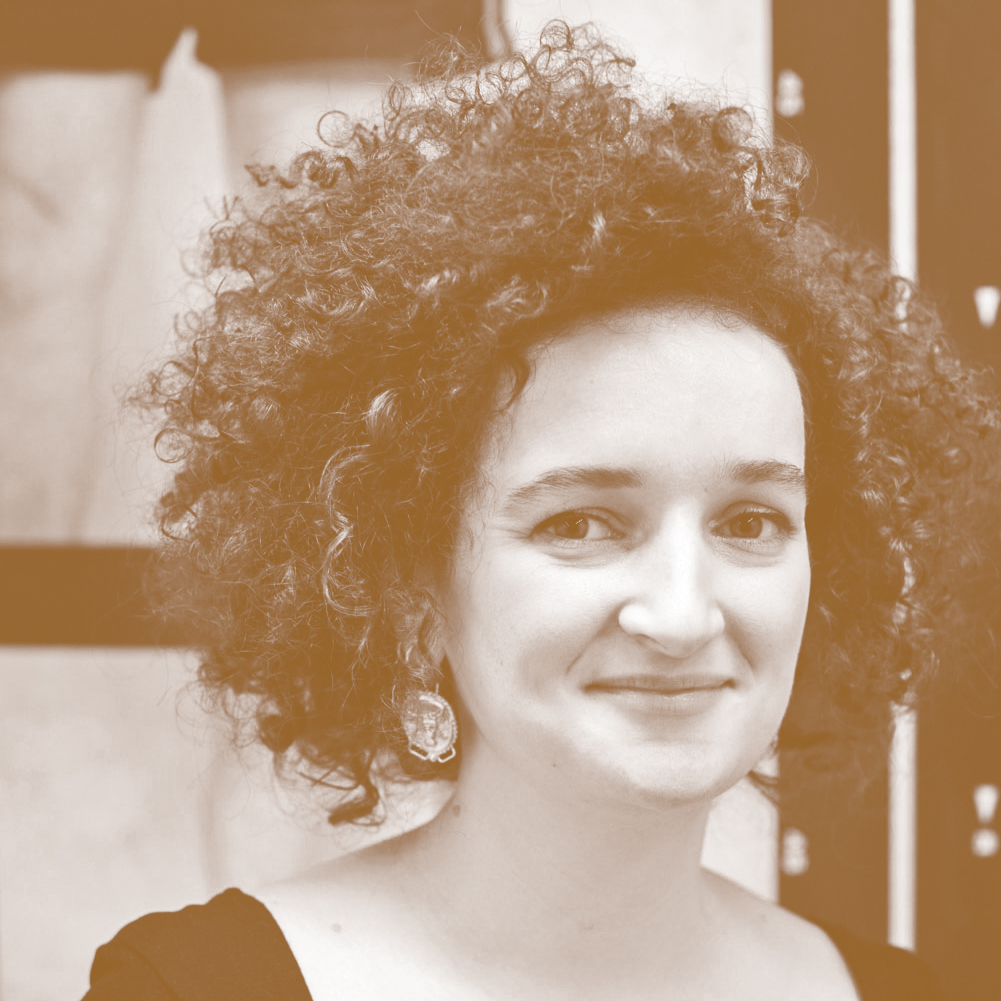
Writing, pleading, recounting
This research project will take the form of a two-part documentary survey based in the Department of the Somme. The first part involves research on Cahiers de doléances (lists of grievances): first those drawn up in 1789, in the context of the French revolution, and then those prepared 230 years later, in early 2019, in response to the Gilets Jaunes movement. Only eight French departments have made their doléances public, including the Somme. What collective story is written and told through their pages? What role do these documents play today, if they have been rendered inaccessible? What does this say about the invisibilization and silencing of citizens?
In parallel to this first part, artistic and documentary work will be carried out in the field, with associations and organisations that work to improve the accessibility of written expression for the general public: whether via public letter-writers, or through the fight against illiteracy.
The project aims to use practice and research to reflect on writing’s role in our everyday life: “writing that, whether in relation to important shared or private moments, or to the routine of our daily activities, appears to serve a single function […]: to leave a trace” (Daniel Fabre, Écritures ordinaires, 1993).
Language plays a role in domination and struggle, and written expression can be used as a tool for emancipation. The ability to write the narrative of one’s own existence, to expose one’s material living conditions, makes it possible to voice one’s grievances and thereby leave a trace in a shared narrative.
—
Nina Ferrer-Gleize est artiste photographe, autrice, enseignante et éditrice, elle a fondé la maison d’édition Pétrole éditions en 2013. Sa première exposition personnelle s’est tenue en 2021 au Bleu du Ciel à Lyon ; une exposition de son travail est à venir au centre d’art GwinZegal (Guingamp) au printemps 2023.
Find the work of Nina Ferrer-Gleize son his Instagram profile
Doriane Molay
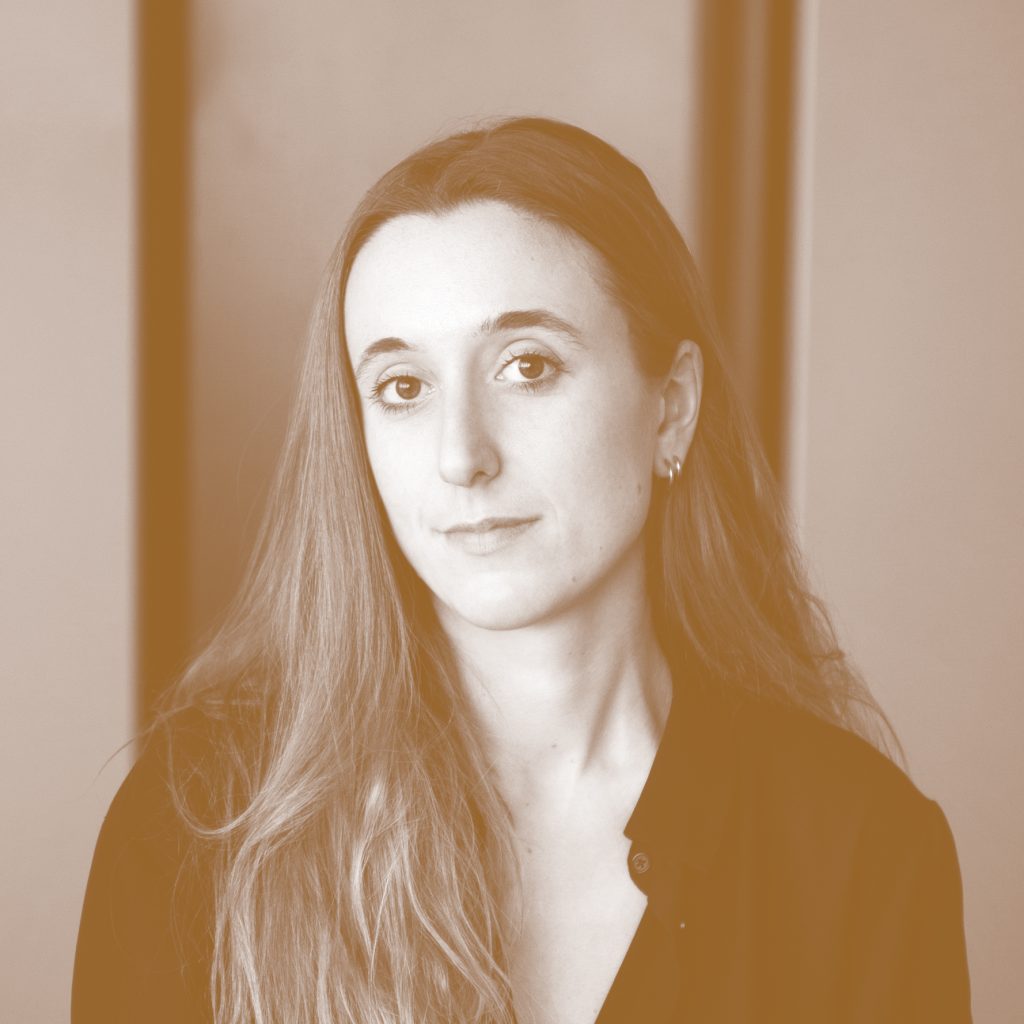
Between seeing and saying – the Stephen sisters’ photo albums as narrative change
This research project aims to examine the impact of ordinary aesthetics on the transformation of narrative through the photo albums of the Stephen sisters. Influenced by the work of their great-aunt, photographer Julia Margaret Cameron, Virginia Woolf and Vanessa Bell produced several photo albums. Are they different in any way from anonymous productions? Are they connected to the sisters’ respective aesthetic practices – writing, for one, and painting, for the other – or are they merely the product of an era characterized by the appearance of new techniques that made it possible for photography to become a popular, more democratic practice? Do they simply bear an aesthetic resemblance that reflects the special bond between the sisters?
The project primarily aims to measure the impact of photographic practice on literature, that of text on the snapshot, as well as how painting affects and influences the photographic field, thereby exploring the very notion of the image through the vibrant lens of the Bloomsbury Group. It also serves as an opportunity to examine the album as a visual grammar composed of photographs, texts, collages and drawings, bordering on fictions and documents at the source of a fruitful disturbance in the identity formation process. If images speak louder than words, does the story told by the Stephen sisters’ albums offer a glimpse of a different way of constructing the self ?
—
A graduate of the École des Beaux-Arts de Paris, Doriane Molay is currently completing her thesis at the École des Hautes Études en Sciences Sociales, where she is a member of CESPRA. Her research concerns the photo album as a practice and examines the narrative presentation of the self and its impact on the constitution of the subject. She has also taught (EHESS, INHA), taken part in international conferences, published, studied abroad (Warburg Institute, Harvard University’s Houghton Library), and is one of the initiators of the project “La fiction et le tournant éthique” (Fiction and the ethical movement), in which she studies the work of Leonard Woolf and the Bloomsbury Group.
Dinf the work of Doriane Molay on his Facebook page and his Instagram profile
2022 edition
Images of resistance
For the fourth edition of its research and creation support programme, the Institut pour la photographie is taking a new look at the extensive field of images of resistance in terms both of its photographic, historic and contemporary culture as well as its visual strategies, from the street to social media.
Resistance, defending a cause or rights, political struggles, demands by trade unions and society as a whole, a search for visibility: engagements that take the form of social movements, individual or collective resistance. These will be the themes of the research projects developed.
The laureates
Maxime
Boidy
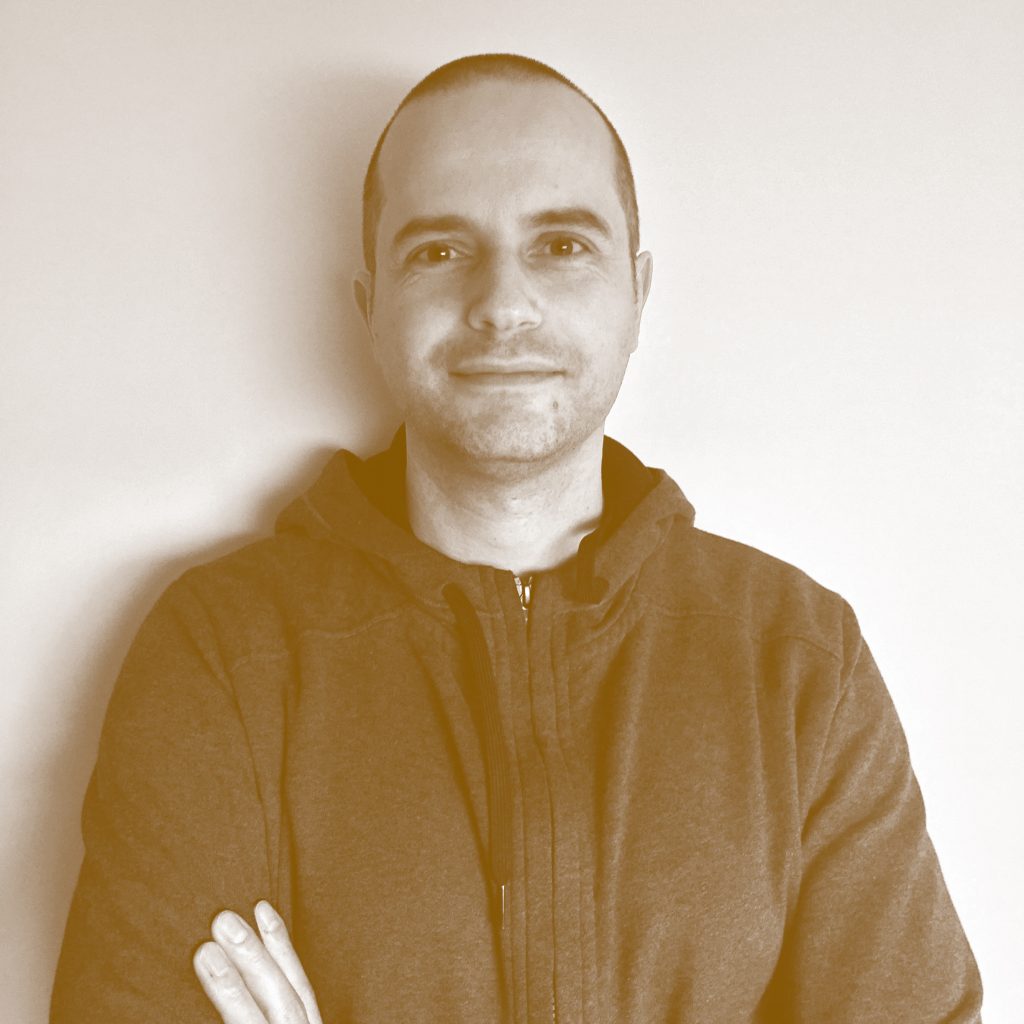
Grèves locales, grève générale
Images et mythes des résistances ouvrières en France (1890-1914)
This research project offers a fresh look at the visual archives of the French workers’ movement between 1890 and 1914, fuelled by the industrial conflicts during this period in the current Hauts-de-France region. Although the strikes that peppered the “Belle Époque” are documented, little thought has been given to the plurality of visual practices in these uprisings. Rich in meaning, the iconography preserved in the archives sometimes only provides information on some of the actions of the insurgent crowds. This project documents and considers the plurality of practices and collective imaginary and their relationship with photography or press cartoons. It focuses on the key idea of revolutionary unionism at the turn of the 20th century: the general strike. It must be understood in the exact terms with which it is debated in revolutionary circles: as a myth constructed by the daily experience of work and struggles. The goal here is to consider the mythical imagery of the strike as one visual corpus among many, in the same manner as press imagery or that relayed by union channels. Incidentally, it is also a question of considering the repercussions, right up to the aesthetics of contemporary social movements: anywhere where the ideal and the practices of direct-action trade unionism are prolonged and reinvented today.
—
Maxime Boidy is a researcher in visual studies. Lecturer at Gustave Eiffel University, and member of the LISAA laboratory (EA 4120), his work mainly focuses on the intellectual history of visual knowledge and political iconography. In particular, he published Les Études visuels (Presses Universitaires de Vincennes, 2017) and co-edited the book Visions et visualités. Philosophie politique et culture visuelle (POLI Éditions, 2018).
Émilie
Goudal
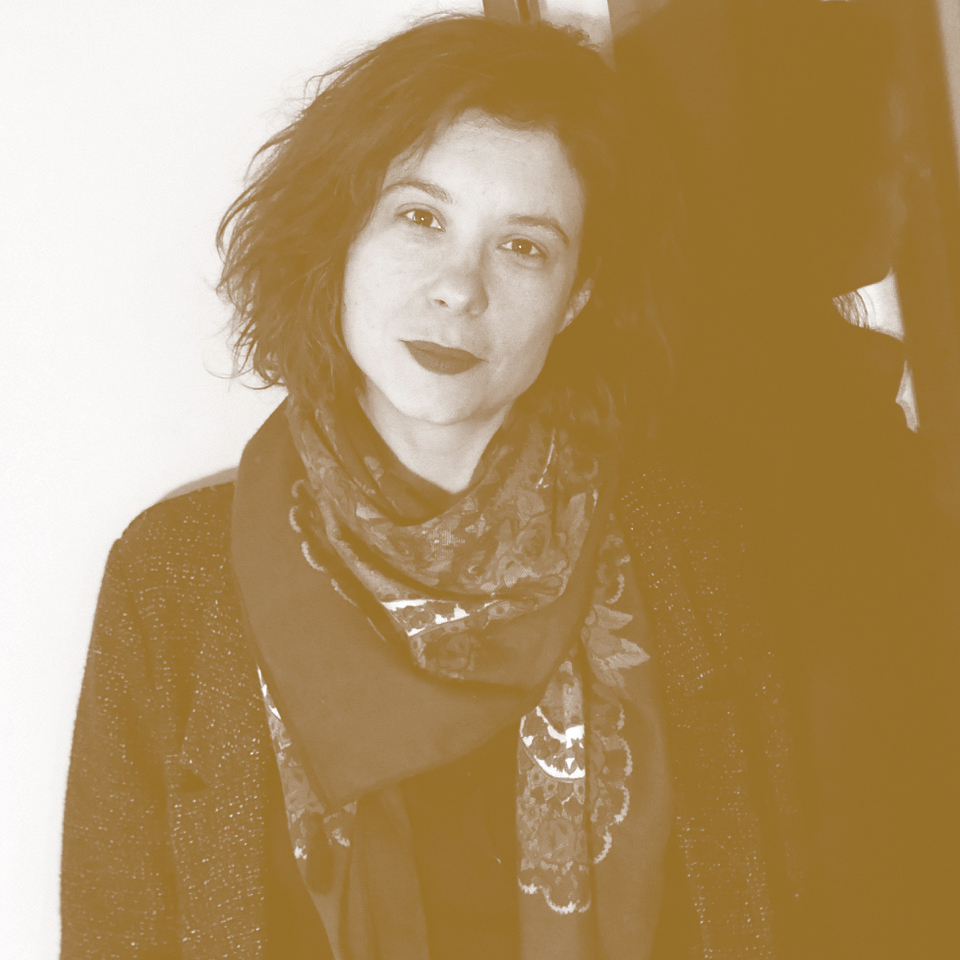
Dans l’oeil d’Agnès Varda, « suivre tous les désordres et les charmes de la décolonisation »
In a 1977 interview, filmmaker and visual artist Agnès Varda (1928–2019) linked “the disorders and charms of decolonisation” to feminist emancipatory struggles, setting out an intersectional approach ahead its time. Using the artist’s photographic work as a primary source, this project studies Agnès Varda’s visual production echoing the feminist, anti-imperialist, and anti-racist pulsations affirmed on an individual and collective scale. Interspersed with the author’s words, works, and writings as well as with other visual and textual archives of emancipatory struggles (Musée du Quai Branly, La Contemporaine, Cinémathèque, etc.), the study of the unpublished photographic corpus, kept at the Institut pour la photographie, could find points of visual and conceptual convergence fostering a possible emergence of an Aesthesis of emancipation. Considering these “charming disorders” as a common thread in this corpus could identify correspondences with other filmmakers, photographers, and international activists who, from Algiers to Paris and from the United States to Cuba, have a different perspective, if only by collectively constituting a deconstruction of or resistance through images. Agnès Varda’s photographs will therefore be connected to images engaging, in counterpoint, other imaginaries in the face of a certain latent visuality, forged by plural political dominations.
—
Doctor of history of art and associate researcher at the CEAC (University of Lille), Émilie Goudal is the author of Des Damné(e)s de l’Histoire. Les arts visuels face à la guerre d’Algérie (Presses du réel, 2019). Her works focus on the interpenetrations between contemporary art, politics, and memory (Germany, Algeria, United States, France) as well as on the concept of Aesthesis of emancipation in a decolonisation context. They have been published in the Perspective, Critique d’art, and Aware journals as well as in various exhibition catalogues and collective works.
Livia
Melzi

Tupi or not tupi
This project documents eleven sacred cloaks, belonging to the Tupinambá, removed from Brazil during the first centuries of colonisation. These cloaks were worn during cannibalistic rituals, a warrior practice that founded the cultural dynamics of this tribe, based on revenge. The motif of cannibalism, especially since the publication of Oswald de Andrade’s Manifesto Antropófago (1928), runs through Brazil’s collective imagination as a territory capable of welcoming plural visual arts gestures, questioning Brazilian identity and its encounter with the Other. The project includes a set of heterogeneous objects: an ongoing photographic series of these eleven coats in their current conservation context, their archives, a series of research notebooks, and other images related to the Western history of these artefacts. These items are a source of reflection and production to construct different visual narratives and question the persistence of certain power patterns in the contemporary world. The epilogue of this research focuses on the development of a photographic dialogue with Glicéria, an indigenous Tupinambá leader who, since 2019, has been reappropriating his people’s identity, where the cloaks have a central role.
It is from a set of photographic archives that the knowledge on these cloaks is transmitted and returned to the descendants of the Tupinambá. Glicéria uses this material and also produces his own images. Breaking away, she offers her own visual narrative on ‘the comeback of the tupinambá cloaks’.
—
Livia Melzi was born in 1985 in Brazil, a qualified oceanographer, she followed the doctorate programme in Art and Literature at the University of Zurich. The artist received the Grand Prix du Salon de Montrouge 2021 with her Qu’il était bon mon petit français and will be exhibiting at the Circulation(s) festival and the Palais de Tokyo in 2022. She works on archives, memory, and the construction of an imaginary of Brazil from images and ethnographic objects. She seeks to question, through photography, the mechanisms at work in the production, conservation, and circulation of images.
Find the work of Livia Melzi on her website and her Instagram profile
Collectif Moss

Deal with it
Esthétiques de la réparation
Considering images both as bearers of different forms of real or symbolic violence and as interfaces for individual or collective repair, Deal with it – Esthétique de la réparation examines the curative aspect inherent in certain visual arts gestures in artistic practices, which act as tools of resistance. Erasure, covering, repetition, cropping, glitch, collection, imprint, collage, and even reconstitution, the multiple actions carried out by the artists on the body of images resemble attempts at conjuration and appropriation. Physical or dematerialised, images can be personal, found, from archives, or amateur images circulating online. These distinct gestures then act as micro-actions of individual resistance to events and general media overload. Also participating in a recovery/showcasing of parallel images or narratives, they contribute to repairing a form of cultural forgetting and erasure, in order to change dominant narratives and representations. As Legacy Russell points out in her book Glitch Feminism, ‘remixing (…) is a technology of survival’. Through close dialogue with a selection of artists who consider and heal images, this research project studies these different processes of resistance via images, within which the latter act as a pharmakon, both remedy and poison.
—
Having met while studying KASK’s Curatorial Studies programme at University College Ghent, Lieselotte Egtberts, Elisa Maupas, Lucie Ménard, and Anna Stoppa have worked together as a curatorial collective since 2019. Based on the complementarity of their profiles (artist, scientist, mediator, and art historian) and their various professional experiences (galleries, institutions, artist-run spaces in France, Belgium, Italy, United Kingdom, and the Netherlands), they work together organically and horizontally, approaching exhibitions as a playground. A few of their recent projects: Transient State, by the artist Pepa Ivanova at the Couvent des Clarisses, Roubaix (2021); (un)broken at Zwarte Zaal, Ghent (2022); Inbox Interference, online project, The Wrong Biennale (2022).
Find the work of the collective on their website and their Instagram profile
2021 edition
Photography and Politics of the Earth
The research and creation support programme aims to develop diverse approaches to photography. For the third edition, the Institut has proposed to turn towards the Earth, now understood in its power of hospitality with regard to today’s ecological issues.
The theme of photography and the politics of the earth enabled us to discover 96 projects on an international scale, many of which were very interesting and demanding, and which met the criteria of the call. Nevertheless, after long and rich discussions, the jury selected 4 projects that the Institut will accompany throughout the year.
The research and creation projects of the winners below will take into account the different aspects of the creation of the subject photography and politics of the Earth.
The laureates
Théodora
Barat
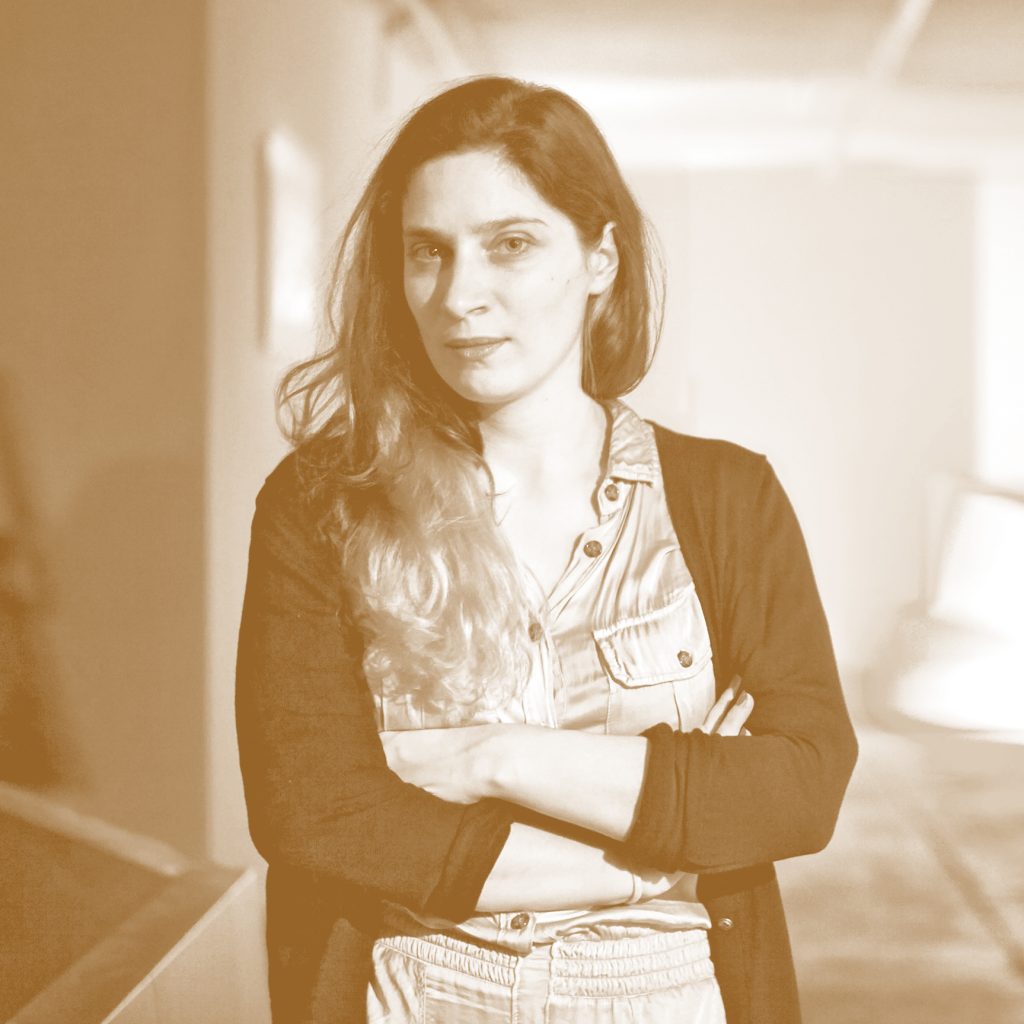
Four Corners
Fours Corners deals with the footprint of US nuclear research in the eponymous region formed by four adjoining states: Utah, Colorado, Arizona and New Mexico. This region was built around uranium: mining, bomb design during World War II and the Cold War, and now radioactive waste management.
Dissecting this scientific-military-industrial complex, Four Corners questions the desert as the ultimate testing ground and posits these radioactive ruins as the last monuments of our civilization.
—
Théodora Barat is a graduate of the Beaux-Arts de Nantes and Le Fresnoy – Studio National des Arts Contemporains. She is currently developing a research and creation thesis within the RADIAN doctoral programme.
Théodora Barat’s work mixes film, photography and installation. Working on the permeability between these different media, she brings narration to one, volume to the other. She is interested in changing environments, in those ultimate moments when the artificial landscape becomes a sign. She auscultates the figures of modernity, dissecting its chimeras in order to question our future.
Her work has been presented at the Cneai, the Emily Harvey Foundation (New York), at Nuit Blanche (Paris), at the Friche de la Belle de Mai (Marseille), at Mains d’Œuvres (Saint-Ouen), at the Palais de Tokyo, the Villa Médicis and in many international festivals. She was the winner of the Audi talents Prize (2016) and the Face / Étant Donnés scholarship (2020).
Find Theodora Barat’s work on her website and her Instagram profile.
Grégory
Chatonsky
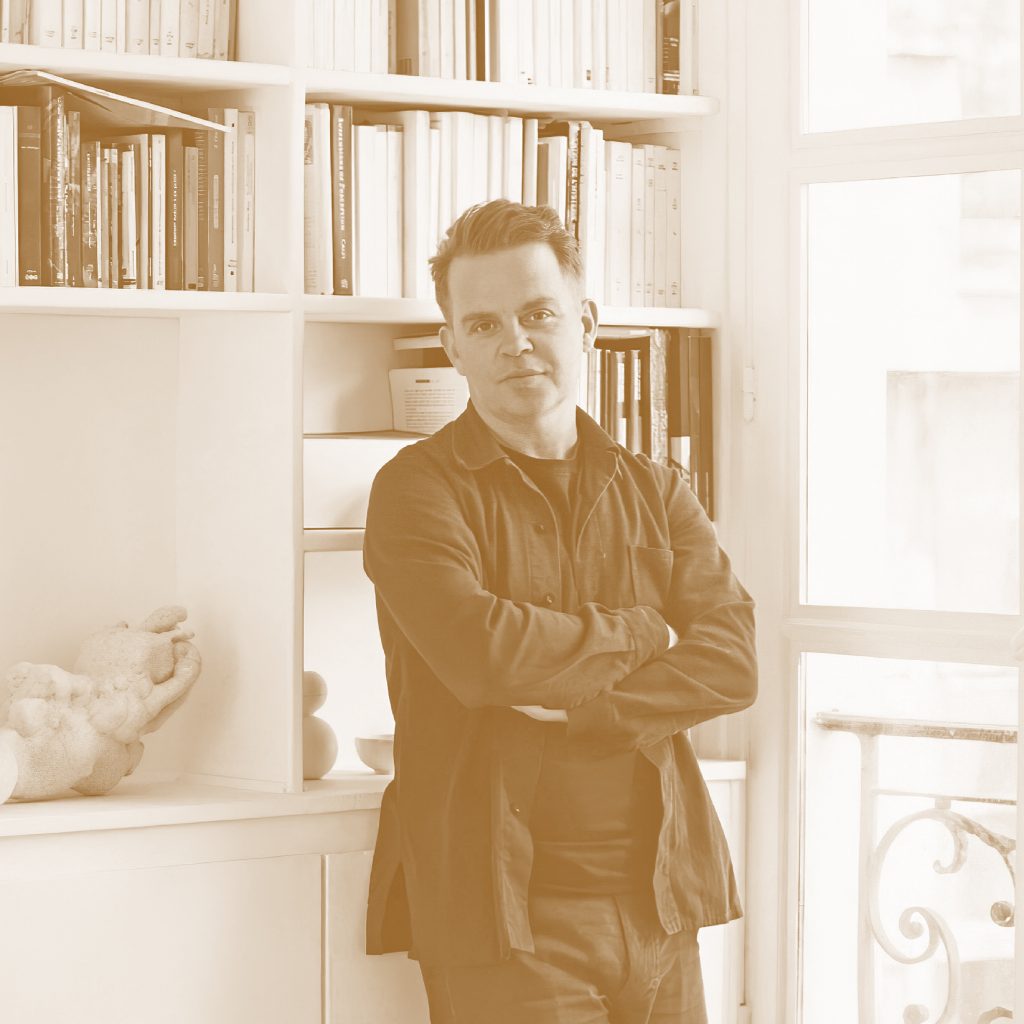
DéTerre Corners
“There’s another world, but he’s in this one.”
Ignaz Paul Vital Troxler
With DéTerre, Grégory Chatonsky continues a reflection begun with Télofossiles in Taipei and Wuhan, then Terre Seconde at the Palais de Tokyo, linking artificial intelligence and extinction. The aim is to experiment the consequences of Artificial Intelligence on the automation of representation. For if artificial neural networks feed on photographs, they produce a realism that is no longer photographic. This closure of realism inherited from the industrial revolution produces images of images and comes to destabilise the very notion of truth.
It is from a device producing artificial images of a possible Earth and searching our planet for resembling images, that work sessions will open with theorists. These sessions, open to the public, will aim to explore the relationship between Earth and AI.
—
Since the mid-1990s, Grégory Chatonsky has been working on the Web, leading him to question the new fictions emerging from the network. In 2001, he began a series on dislocation, aesthetics, ruins and extinction as an inextricably artificial and natural phenomenon. Over the years, he has turned his attention to the capacity of machines to produce almost autonomously results that resemble human production.
These three issues have become convergent thanks to artificial imagination, which uses data accumulated on the Web as Artificial Intelligence learning material to produce a likeness. In the context of a possible extinction of the human species, AI then appears as an attempt to create a monument by anticipation that would continue after our disappearance.
He was a teacher at Le Fresnoy, UQAM and now at Artec. He was an associate researcher at ENS Ulm and Unige de Genève.
Find Grégory Chatonsky’s work on his site and his Instagram profile
Sarah
Ritter

L’ombre de la terre
L’ombre de la terre is a long-term project that originates in the exploration of contemporary knowledge production chains. A first chapter focused on research in optics, exploring light as a tool, as a research object and as an industrial issue.
The “laboratories” are seen as staging areas, spaces for the production of fiction. A bridge has been built between oceanographic research and optical research. The “depths” of the ocean respond to the mountains, which rose from the bottom of ancient oceans. After light as an object, the second chapter of The Earth’s Shadow will focus on the depths: terrestrial and maritime.
Photography has participated in the enterprise of reducing the earth to a calculable, quantifiable, homogeneous and undifferentiated space. In this sense, it is undoubtedly one of the least well-placed tools to produce a space of alteration of the capitalist order – to produce heterogeneity within the calculable and calculated space. But following Flusser, Sarah Ritter thinks that it is possible to use photography to open breaches, to puncture holes in maps, to darken the transparent and digitised horizon. Photography here is a poetics of the gaze.
How can photography propose other movements to the gaze than that of a reassuring and edged recognition?
This chapter, like the first one, will have several sources, with different companions on the road, such as the Oceanology Department of the University of Lille, its technological platform, the National Archives of the World of Work, and Elsa Dorlin with whom the artist will go to French Guiana, the first French region of contemporary mining extraction.
—
Sarah Ritter is a photographic artist. Her method is heuristic. In fact, the artist, a graduate of the Ecole supérieure de la photographie d’Arles and the Ecole nationale de Paris-Cergy, does not work in series, but by accumulating images that find their order and associative logic over time. The process is therefore a long one, allowing the photographs to mature and to match formally or metaphorically.
She published a monograph with Éditions Loco in 2019, “La nuit craque sous nos doigts”, accompanied by an unpublished piece by Christophe Fiat. Her work is present in two public collections, that of the FRAC Auvergne and that of the FNAC, since 2020. It has been shown in France (Centre photographique d’Ile-de-France, Rencontres d’Arles, Biennale de Mulhouse among others) and abroad (Finland, Germany, Slovakia, Mexico).
She is currently in residence at the Mignotgraphie printing house, with the Ministry of Culture, and co-directs the art research project “Leviathan” at the École supérieure d’art de Clermont-Métropole.
“L’ombre de la terre”, the first chapter of which was supported by the CNAP, is initially an exploration of the spaces of knowledge production, particularly research in optics. This second chapter, which is being initiated with the Institut pour la photographie of Lille, will focus on extraction, both contemporary and past, which mixes with those of the sciences.
Find Sarah Ritter’s work on her site
Ana
Vaz
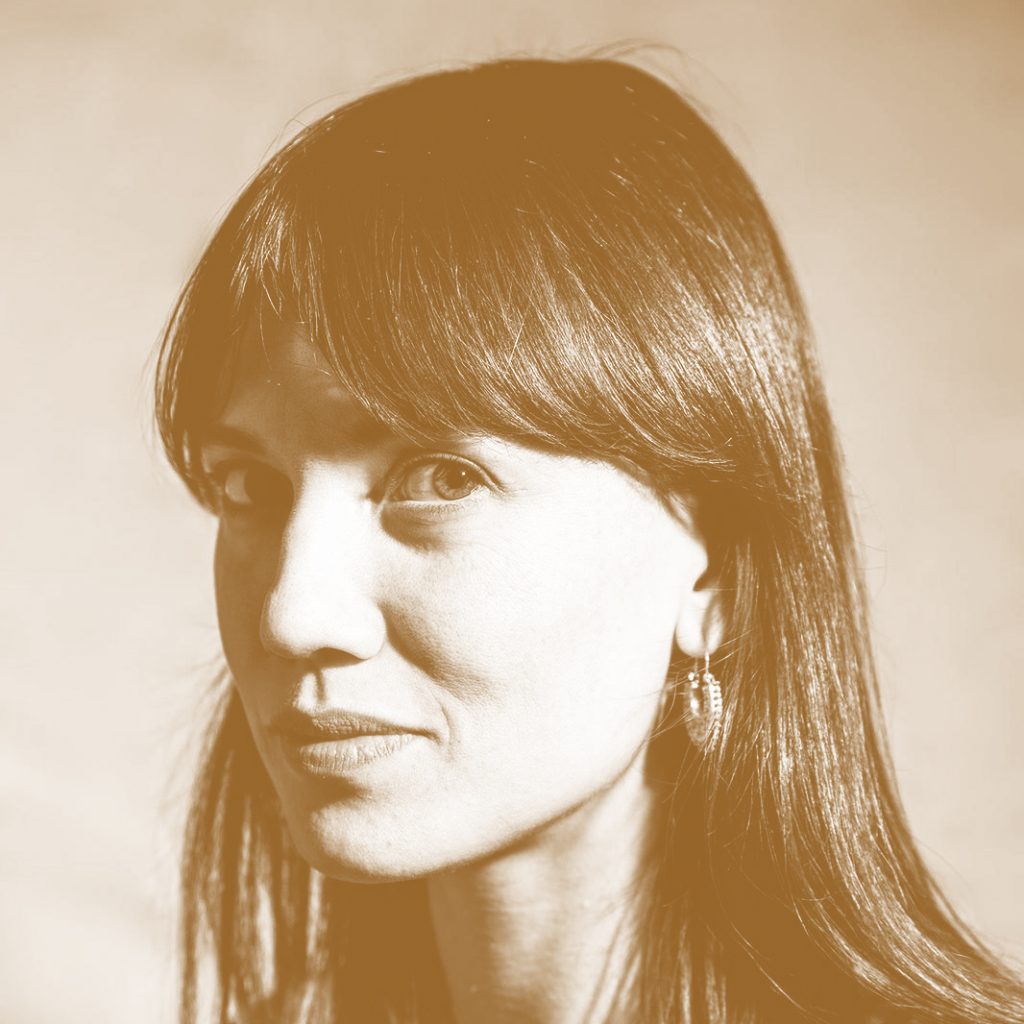
Le Jaguar Bleu
Le Jaguar Bleu follows the pre-Colombian anthropogenic soils of pre-Colombian origin in the Brazilian Amazon: terra preta, a compost that contradicts the colonial myth of virgin nature and reveals the Amazon forest as a garden maintained by the advanced agricultural techniques of the Amerindian peoples. Here the terra preta becomes a speculative figure for an anthropology that is (a)symmetrical between the peoples of the forest, those who cultivate and maintain this land, and the peoples of the laboratories, the scientists who study it with their vision machines
—
Ana Vaz is a Brazilian artist and filmmaker whose filmography is based on experimental collages of images and sounds, found and produced, to reflect on situations and contexts historically and geographically marked by stories of violence and repression.
The impact of colonialism and ecological ruin are the backdrop to his immersive “film-poems”. Expansion or consequence of her films, her practice can also be embodied in writing, critical pedagogy, installations, film programming or ephemeral events. His films have been screened and discussed in film festivals, seminars and institutions such as Tate Modern, the Palais de Tokyo, the Jeu de Paume, the Centre Pompidou, LUX Moving Images, New York Film Festival, Berlinale Forum Expanded, BFI, Cinéma du Réel, Courtisane…
Find Ana Vaz’s work on her Instagram profile
2020 edition
Photographs and visual cultures of the imaginary
As a purveyor of allegorical or mythological imagery, Photography has quickly become a privileged mode of expression for creating a link between the symbolic and the real. It captures the collective imaginations rooted in the oldest myths or beliefs in the most futuristic worlds (rites, legends, utopias, scientific imagery, urban fantasies, UFOs, science fiction, etc.).
Omnipresent in both our popular and scholarly imagery, these representations contribute to our awareness of the present time; some even question their participation in the social and scientific construction of reality.
Between visual culture, visual anthropology, social sciences, current affairs politics and art history, we can grasp the way in which Photography triggers or reactivates shared narratives, as well as how it unearths or creates collective imaginations from all sides.
The research and creation projects of the laureates below will take into account the different aspects of the creation of photographs and visual cultures of the imaginary.
The laureates
Ezio
d’Agostino
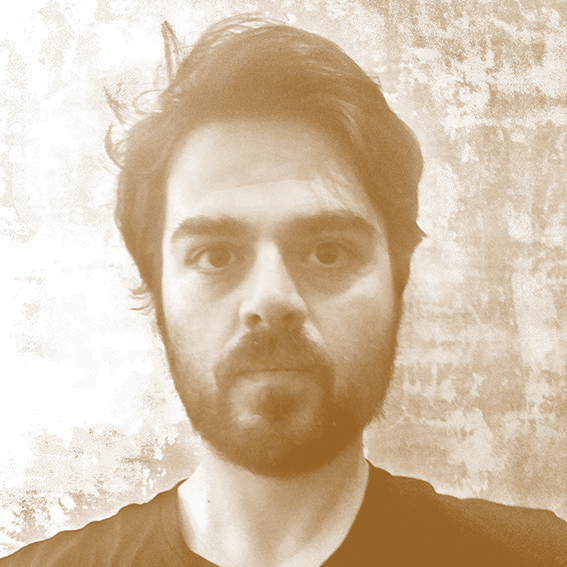
True Faith
True Faith is a research on the phenomenon of apparitions of religious images in Italy, a country in which two thirds of the cases of apparitions recorded in the world occur. Through newspaper archives, I locate this “invisible geography”, I go to the places of the apparitions, I ask the inhabitants to tell me where the apparition took place and to tell me what they see. In collaboration with a socio-anthropologist, I collect all these testimonies. The photographic image thus becomes proof of something unprovable, a document of something that will always remain invisible to me.
—
After training in Archaeology at the University of Florence, Ezio D’Agostino studied photography at the Scuola Romana di Fotografia in Rome. His artistic approach is the result of his training as an archaeologist: he focuses on the historical and cultural stratification of the landscape, inviting the viewer to reflect on the construction systems of contemporary society and its imaginations. He lives in Marseille.
Find the artist’s work on his website and Instagram profile
Véra
Léon
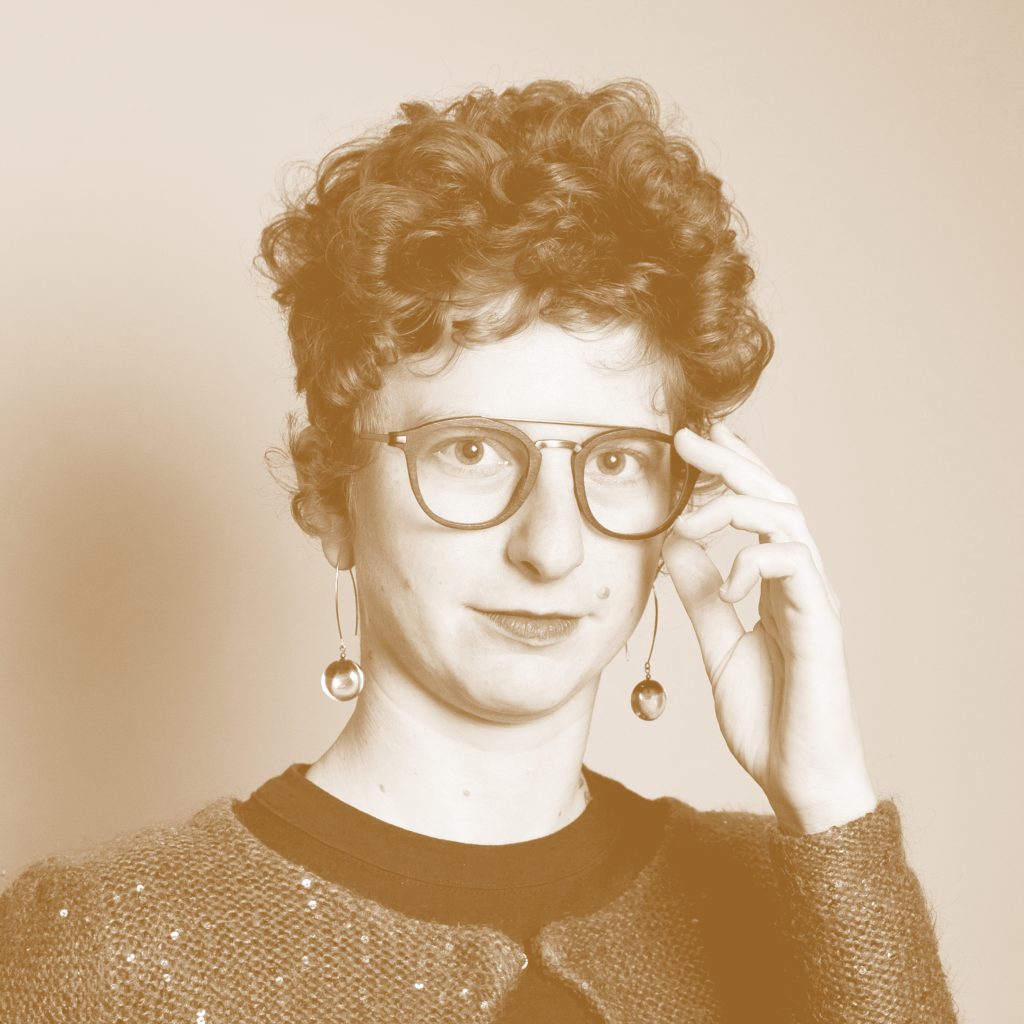
Photographer: male name? A profession at the source of imaginations
While the gender stereotypes conveyed by visual culture have been repeatedly denounced, the question of their origin is often overlooked. This project aims to highlight the power relations that determine images, from their production to their reception. In particular, it studies the gendered hierarchies within the photographic professions. By analysing various objects (periodicals, photographs, films, etc.), it also examines the joint construction of social and visual norms. Finally, at the intersection of research and mediation, between historical heritage and contemporary issues, he questions the issues of image pedagogy through the question of the formation of the gaze and its gendered, social and political implications.
—
Véra Léon is the author of a doctoral thesis in educational sciences entitled “One is not born a photographer, one becomes one”. With a dual background in history at the ENS de Lyon and in photography and contemporary art at the University of Paris 8, she has been teaching at the University of Paris since 2015. She conducts research on the history of artistic training, and on gender in the photographic world.
Find the artist’s work on his Instagram profile
David
De Beyter
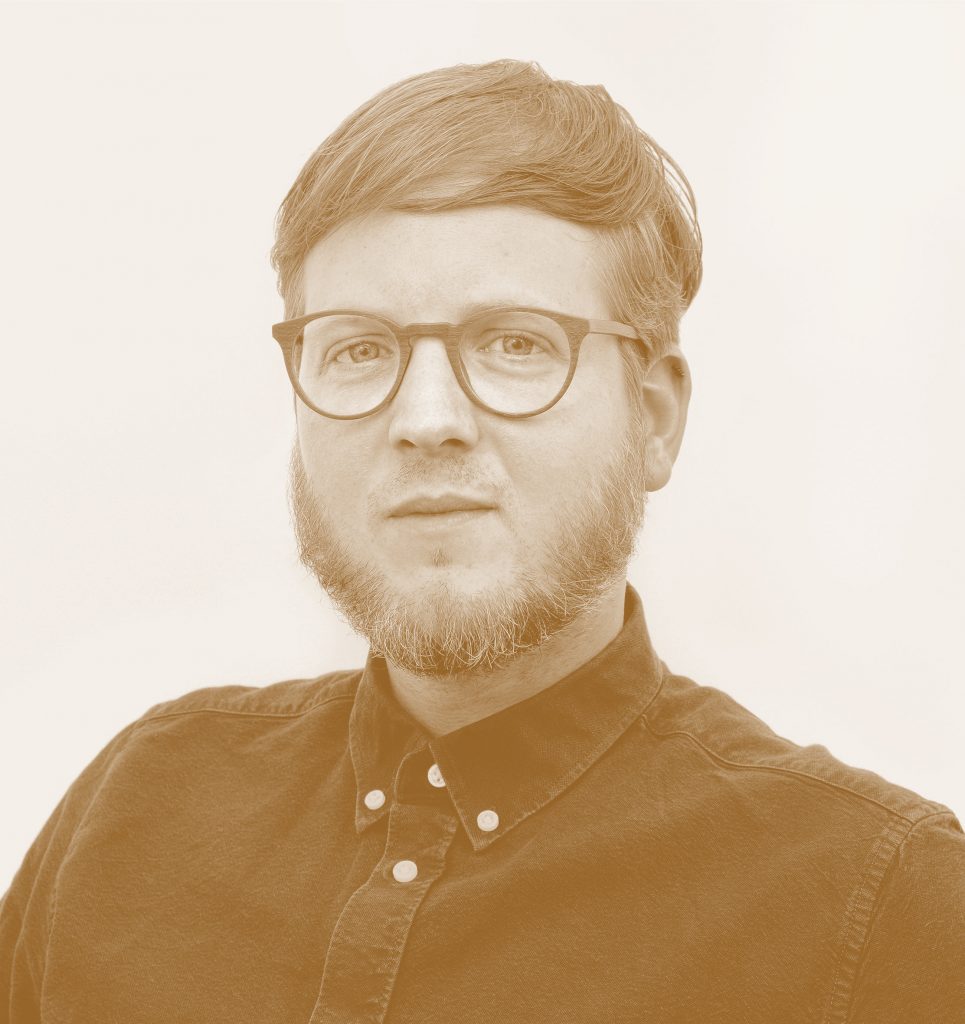
The Skeptics
The Skeptics is a long-term research based on an amateur practice derived from ufology, the scientific ufology. The project brings together films, photographs and objects and is divided into four chapters (the first two were exhibited at the Prix découverte des Rencontres d’Arles, 2019). The support of the Institute will enable the next two to be carried out: R.O.T.G. (Relics Of Technological Goddess), a photographic survey of the iconographic collections of the French associations of this science of appearance (including the Groupe ufologique du Nord); and Magical Places, a series of photographs requiring staging processes, experimentation on negatives, or 3D integration, in order to exploit, like sets, the landscapes of the Canary Islands or certain specific American sites.
—
David De Beyter, a former student artist from Le Fresnoy, lives and works in Tourcoing. His approach to photography, both conceptual and documentary, is mainly based on landscape practices in relation to the different statuses of the image. His work Big Bangers has been selected for the prestigious FOAM Talent exhibition between Amsterdam, Paris, New York, London and Frankfurt, and is the subject of several publications by RVB Books, including Damaged Inc. in 2018.
Find the artist’s work on his website and Instagram profile
Laureline
Meizel

Tame the abyss? Photography, speleology and underground imaginations
While aerial photography and its impact on the perception and representation of our environment has been the subject of research, underground photography remains an unthought. Under the banner of vertical exploration, it is nevertheless based on the same desire to discover and share new perspectives on the world by testing the standards of photographic practice. Based on the study of the activities of Édouard-Alfred Martel (1859-1938), an ardent promoter of modern speleology, this research project aims to understand how, with what intentions, according to what modalities and with what effects photography has reconfigured the visual culture of the imaginary underground world, from the theories of the Hollow Earth to representations of the mining universe, since the end of the 19th century.
—
Born in Lille in 1980, Laureline Meizel holds a doctorate in Art History from the University of Paris 1 Panthéon-Sorbonne. Since 2006, she has been conducting research on the relationships between photography and publishing in the 19th and 20th centuries, in which her publications and teaching at the university and at the EHESS are involved. In this capacity, she was notably awarded the Roland Barthes Prize in 2008 and is currently a member of the editorial board of the journal Photographica.
2019 edition
Photography, object of diffusion
To understand how photography has transformed our mode of access to knowledge, culture and information, we need to ask ourselves about the factors of the dissemination of photographs:
The materiality of images is an essential factor in the transmission and circulation of photography. The materiality of the images is essential to the transmission and circulation of photography. The processes, reproducible or non-reproducible, the editing, the indexing of contents, the format of the images exhibited, the places where they are seen. From printing to books to digital tools, from agency business to shared photography, the history of dissemination through photography is the history of material objects.
At the same time, studying photography as an object of dissemination also means making visible the networks and the socio-economic conditions of their production, as well as the conditions of their mediation (popularizers, commercial agents, publishers).
In response to this call, the candidates have developed a singular approach, whether in the form of theoretical or plastic research, by responding to the theme of photography as an object of dissemination.
The laureates
Aurélien
Froment
Cinema in the spirit of Pierre Zucca
Exploring the photographic work of Pierre Zucca (photographer on the sets of films by Jacques Rivette, Claude Chabrol, François Truffaut, Alfred Hitchcock, etc.) through its invisible or unmatched contours, the research will take different forms, from photography to cinema and performance.
—
Aurélien Froment is a graduate of the Regional School of Fine Arts in Nantes, a cameraman and film projectionist. His work is heavily influenced by cinema and features in exhibitions both in France and abroad.
He lives in Edinburgh where he teaches photography at the University of Edinburgh and the Edinburgh College of Art.
Find the artist’s work on his Instagram profile
Audrey
Leblanc
Disseminating its own maps of the world and society
Agency photo collections having been used to develop editorial content in the televised news programmes of the former French broadcaster ORTF (1960-1986)
—
Audrey Leblanc is a doctor of the EHESS in history and civilisations. She was joint curator of the exhibition Icons of May 68: Pictures have a History in 2018 at the French national library (BnF). She teaches at the University of Lille and jointly leads the research seminar entitled ‘Photography, publishing, press: cultural history of image producers’ at Cehta/EHESS.
Find the artist’s work on his Instagram profile
Christel
Pedersen
Greetings from Reykjavik – Disseminated archives
Curatorial research project looking at letter writing in the experimental arts scene of Reykjavik in the 1960s and 1970s, which helped extend the reach of the local artistic community through the dissemination of visual documents – particularly photography – to a much greater network abroad. A practice which, today, could be likened to the dissemination of works of art via social networks.
—
Christel Pedersen has a research degree in the history of art from the University of Copenhagen and Paris 8 University. She currently lives in Paris, where she is an independent researcher, author and translator of artists’ poetry, theories and writings in English, French and Nordic languages.
Raqeul
Schefer
and
Catarina
Boieiro
Photography books and liberation movements in Africa
Somewhere between militant documents and aesthetic objects, the photography books produced around the 1970s in Portuguese-speaking African countries on – and for – independence movements offer a unique reflection on the role and power of the photograph. This project aims to retrace the journey of this corpus, through an exhibition, encounters and films.
—
Raquel Schefer is a researcher, film-maker and programmer. Doctor of the Sorbonne Nouvelle – Paris 3 University in Film and Audiovisual Studies.
She has published a large number of works and articles, and teaches at Paris, Rennes, Buenos Aires and Mexico City.
Catarina Boieiro has a Research Diploma in Arts and Languages from the EHESS.
She is an independent curator whilst at the same time working in communication, programming and production for art centres and cultural eventspecialised in image and contemporary visual arts.
